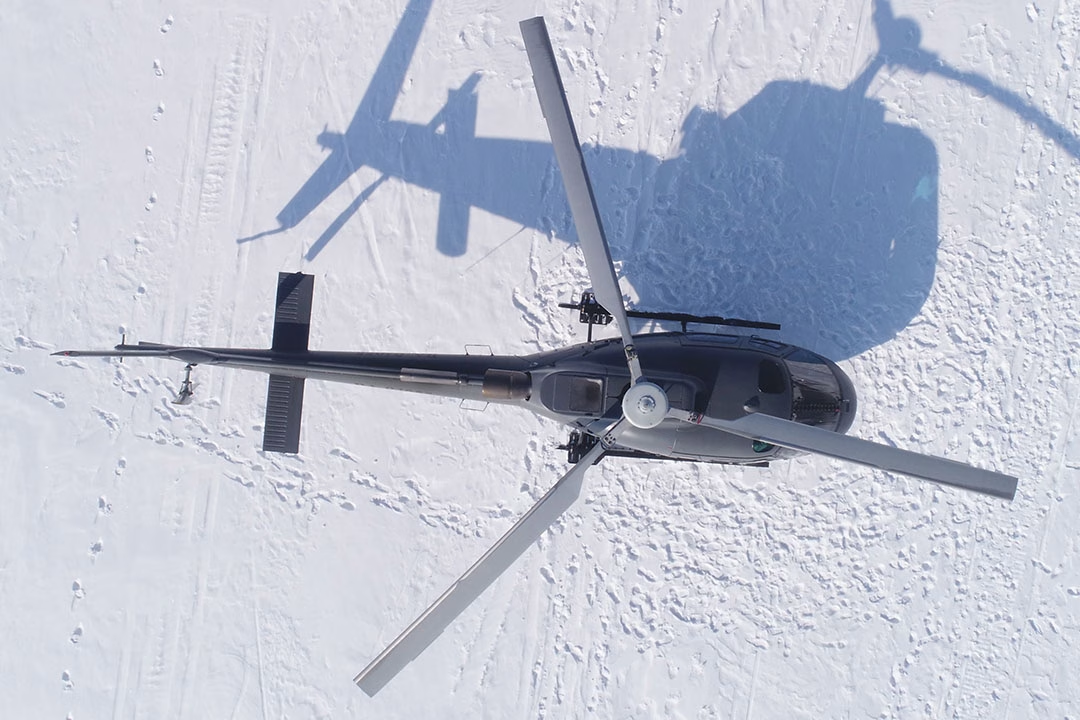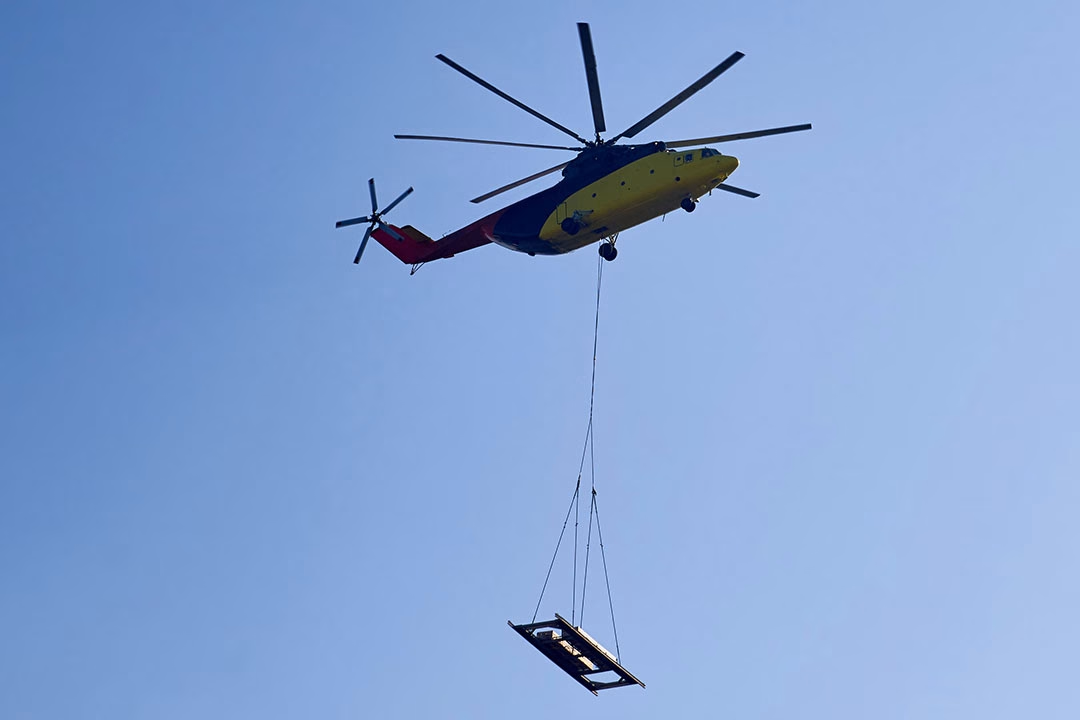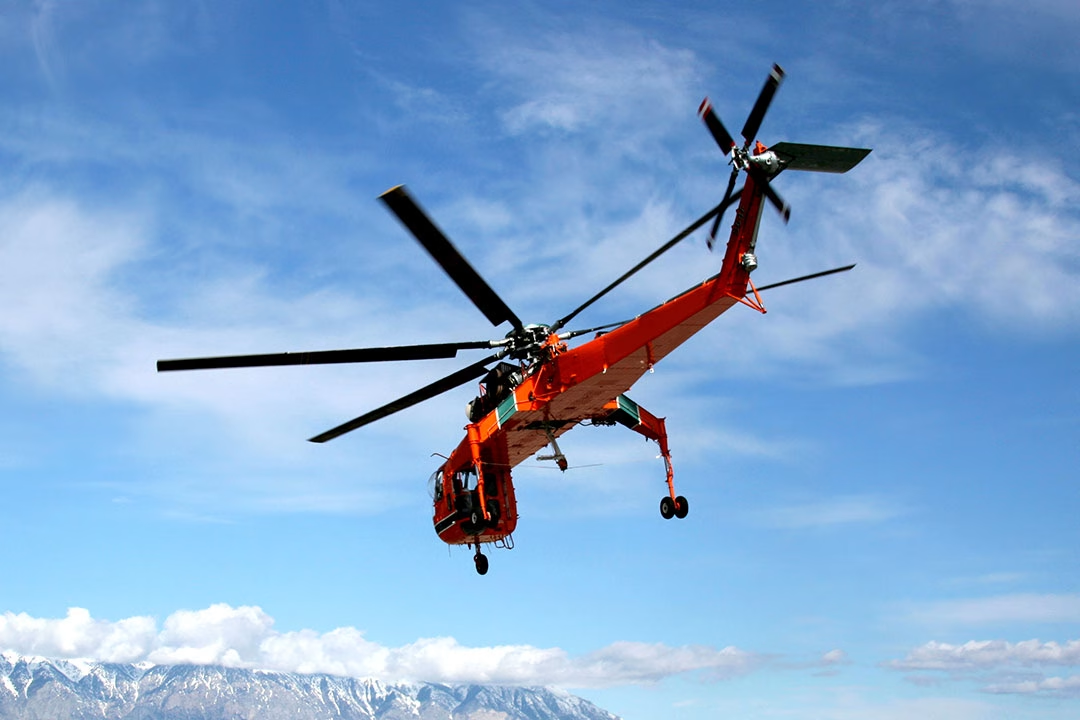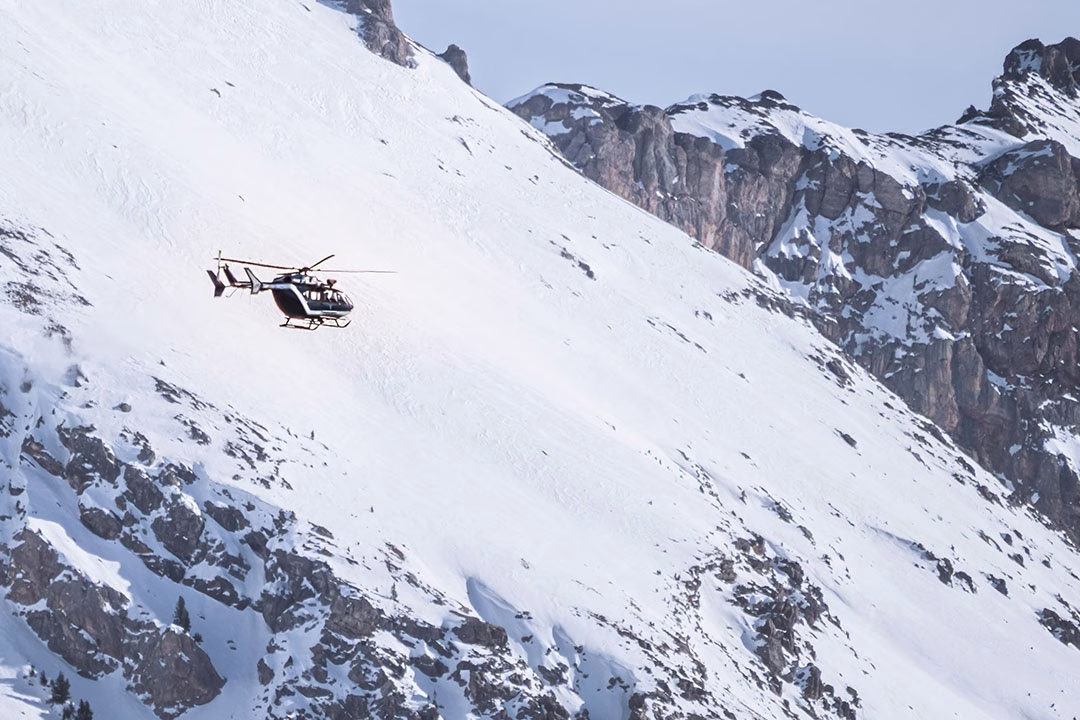Winter helicopter operations bring together the excitement of rotary wing flying with the challenges of snow, ice, and rapidly changing weather. Cold air, low visibility, and mountainous terrain all influence aircraft performance and pilot workload. Reputable operators respond with dedicated winter procedures, careful planning, and a strong safety culture so that winter becomes an opportunity rather than a liability.
How Winter Changes Helicopter Performance

Rescue helicopter in the Austrian Alps
Winter flying is more than just cold temperatures. It changes how lift is generated, how engines behave, and how pilots manage visibility and terrain. Aviation safety groups agree that cold weather flying can be very safe when crews apply specialized winter techniques and respect environmental limits.
Cold Air And Better Performance
Cold air is denser than warm air, which naturally improves rotor efficiency and engine output. This gives pilots additional performance margin and more stable hover capability. Dense air can support higher payloads and smoother lifting in certain conditions.
The advantages are only part of the story. The same winter environment can create slick helipads, frozen linkages, and snow that hides obstacles. In cold weather operations, pilots contend with conditions that can shift quickly enough to turn an otherwise simple flight into a full weather day, which is why winter flying demands a more cautious approach.
Icing Hazards In Winter Helicopter Operations

Gnifetti summit, Monte Rosa, Alps, Italy
Icing is one of the most serious considerations in winter helicopter operations. Ice can form on rotor blades, engine intakes, antennas, and windscreens, sometimes faster than expected. Even a thin layer can disrupt airflow, reduce lift, and alter rotor balance. In rotorcraft icing safety material, the effects of ice and snow ingestion are linked to sudden engine power loss, underscoring why icing avoidance is such a critical part of winter flying.
To manage this risk, professional operators typically:
- Avoid known or forecast icing layers when aircraft are not certified for flight in icing.
- Use anti ice and de ice systems when installed and follow aircraft specific limitations.
- Perform meticulous preflight inspections to remove frost, ice, and compacted snow from critical surfaces.
- Delay, divert, or cancel flights whenever icing risk cannot be safely mitigated.
Visibility, Whiteout, And Terrain
Winter helicopter operations often take place where visibility can shift from excellent to nearly zero in minutes. Snow showers, blowing snow, and flat light over featureless terrain make it difficult to judge height and motion. In snow landing and takeoff techniques, rotor downwash is shown to recirculate loose snow quickly enough to produce sudden whiteout during hover or landing, which is one reason winter approaches are flown with extra caution.
Training focused on flat light and whiteout mitigation highlights the value of holding strong outside references, relying on instruments when visual cues fade, and abandoning an approach the moment visibility deteriorates. In winter helicopter operations, this often leads to choosing approach paths that preserve visual contrast and ensuring a go around plan is in place well before reaching the landing zone.
Core Safety Procedures In Winter Helicopter Operations

North Shore Search and Rescue are rescuing a man skier in the backcountry of Seymour Mountain
Behind every successful winter helicopter flight is a disciplined sequence of planning, preparation, and monitoring. Most of it happens long before anyone lifts off the pad.
Preflight Planning And Aircraft Preparation
Pilots spend extra time reviewing weather, terrain, alternates, and performance. In winter flying techniques, special attention is placed on frontal systems, icing potential, and strong winds, all of which can influence go or no go decisions during cold weather operations.
- Confirming proper fuel grades and cold temperature limitations.
- Checking hydraulic and engine oil levels plus battery health for cold starts.
- Inspecting anti ice and de ice systems when installed and reviewing procedures.
- Verifying cabin heat and defog systems for comfort and clear visibility.
- Loading appropriate survival and emergency equipment for remote or offshore routes.
Ground Operations On Snow And Ice

helicopter stands on the ice of Lake Baikal in Russia
Snow covered landing zones demand careful handling. Fresh or loose snow can be pulled into the rotor system, hide obstacles, or create whiteout around the aircraft. Techniques in snow landing and takeoff practices focus on maintaining visual references and reducing recirculating snow during liftoff and landing.
- Inspecting and clearing pads when possible, with attention to hidden objects.
- Using crew escorts and marked walkways to keep ground personnel safe.
- Adjusting start and shutdown procedures to minimize snow ingestion.
In Flight Adjustments
Once airborne, pilots adapt their techniques to winter conditions. In helicopter operations in adverse weather, the emphasis on conservative minimums, early diversion decisions, and avoidance of localized hazards mirrors the choices pilots make throughout cold weather flying.
- Choosing routes that follow lower terrain and offer better diversion options.
- Managing altitude to balance obstacle clearance with icing and turbulence avoidance.
- Reducing airspeed in degraded visibility or rough air.
Heavy Lift Winter Helicopter Operations

The world’s largest cargo helicopter transports cargo.
All of these winter techniques become even more important when helicopters are not just carrying people but also lifting serious weight. Heavy lift winter helicopter operations support construction, utilities, energy projects, and infrastructure maintenance when traditional ground access is slow, hazardous, or completely unavailable.
Why Winter Helps Heavy Lift Projects
Cold, dense air can significantly improve lift capability, especially for external load work. Performance guidance such as the NWCG helicopter performance handbook notes that higher temperature and altitude reduce lift, which makes cool conditions attractive for demanding lift missions. In winter, heavy lift crews can sometimes operate with larger performance margins, assuming snow, ice, and wind risks are well controlled.
Typical Winter Heavy Lift Missions
In practice, winter helicopter operations often center on heavy lift tasks such as:
- Setting HVAC units, generators, and structural components on rooftops or remote foundations.
- Supporting utility and energy work, including towers, power lines, and pipelines.
- Assisting with snow removal from critical infrastructure
- Moving construction materials into sites that are inaccessible by road due to snow and ice.
The Aircraft That Make Heavy Lift Possible

The S-64 Skycrane
Heavy lift winter helicopter operations rely on purpose built machines. Iconic aircraft such as the S-64 Skycrane are designed around an external load mission and see regular use in construction, logging, and firefighting. Modern fleets draw from a range of heavy lift platforms, many of the same models featured among the top heavy lift helicopters for their combination of payload capacity, range, and cold weather performance.
In winter, these aircraft benefit from improved lift but must also withstand additional mechanical stress from cold starts, icing exposure, and gusty winds. Maintenance teams follow enhanced cold weather procedures, such as those described in articles on helicopter maintenance in extreme weather, that include preheating, de icing safeguards, and detailed inspections of rotor and driveline components.
Flying With Confidence During the Winter

A rescue helicopter flies near steep, snow-covered peaks at Serre Chevalier, Briançon in the French Alps
When managed with care and expertise, winter helicopter operations deliver safe, reliable access to destinations that would otherwise be limited by snow, ice, or seasonal road closures. The same cold weather that complicates flight planning can also enhance aircraft performance, provided crews use proper procedures and respect winter weather limitations.
From remote site support to essential transportation, winter operations highlight the value of skilled pilots, winter ready aircraft, and strong safety cultures.
